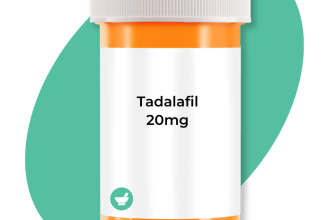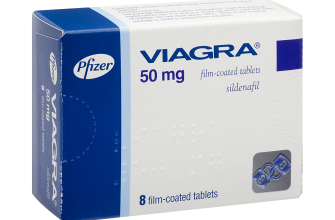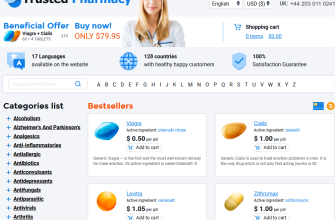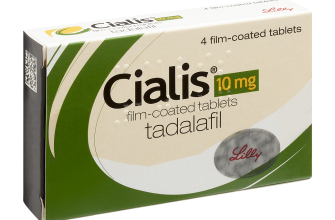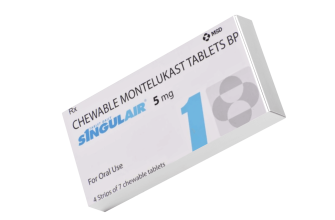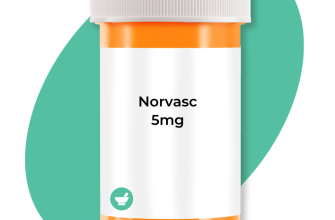The generic form of Norvasc, known as amlodipine, offers a reliable and cost-effective option for managing hypertension and angina. It works by relaxing blood vessels, which improves blood flow and reduces the heart’s workload. Patients can benefit from this medication by adhering to the prescribed dosage, typically taken once daily.
Research shows that amlodipine is effective for a wide range of patients, including those with varying degrees of cardiovascular risk. Regular monitoring of blood pressure is advisable to assess the effectiveness of the treatment. This proactive approach enables timely adjustments to the medication if necessary.
Before starting amlodipine, consult with a healthcare provider to discuss any existing conditions or medications that may interact. This ensures a tailored treatment plan that aligns with individual health needs. Remember, consistent use of this generic medication can lead to significant improvements in cardiovascular health and overall well-being.
Generic of Norvasc: A Comprehensive Overview
Choosing a generic version of Norvasc offers a practical solution for managing hypertension and angina. Amlodipine, the active ingredient, effectively relaxes blood vessels, improving blood flow. This can lead to enhanced heart health while minimizing potential side effects associated with more expensive brand-name medications.
Benefits of Taking Generic Amlodipine
Generic Amlodipine, like Norvasc, provides comparable efficacy in treating high blood pressure. Patients often notice improved well-being with a daily dose. Additionally, generics are typically more affordable, making them accessible for long-term use. Regular use can significantly reduce the risk of heart attack and stroke.
Considerations for Patients
Consult your healthcare provider before switching to a generic version. While most individuals tolerate Amlodipine well, potential interactions with other medications require attention. Monitor your blood pressure regularly and report any unusual symptoms to your doctor. Keeping a consistent routine helps maximize the benefits of the medication.
Opting for the generic version can lead to substantial savings and effective management of cardiovascular health. Prioritize your treatment plan while staying informed about your options. Adhering to your healthcare provider’s advice ensures a smoother experience with Amlodipine.
Understanding the Composition and Mechanism of Action
Norvasc, the brand name for amlodipine, contains the active ingredient amlodipine besylate. This component acts primarily as a calcium channel blocker.
- Composition:
- Amlodipine besylate: The active moiety responsible for therapeutic action.
- Inactive ingredients: Include but are not limited to microcrystalline cellulose, lactose monohydrate, and magnesium stearate, which help in tablet formation and stability.
Amlodipine specifically targets L-type calcium channels found in the vascular smooth muscle and heart muscle.
- Mechanism of Action:
- Blocks calcium entry through these channels during depolarization.
- Relaxes vascular smooth muscle, which leads to vasodilation, reduced peripheral resistance, and decreased blood pressure.
- Increases blood flow to the heart muscle, alleviating angina symptoms.
Administering amlodipine results in a gradual and sustained lowering of blood pressure without causing reflex tachycardia, making it a suitable choice for managing hypertension and angina.
Patients often tolerate amlodipine well, but monitoring for side effects such as swelling in the extremities is advisable. Adjustments to dosage can optimize therapeutic outcomes while minimizing adverse effects.
Recognizing the composition and mechanism aligns treatment protocols for individuals requiring blood pressure management and angina relief. Collaboration with a healthcare provider empowers informed decisions about usage and monitoring.
Comparative Efficacy: Generic Norvasc vs Brand Name
Clinical studies indicate that the generic version of Norvasc, known as Amlodipine, demonstrates comparable efficacy to the brand name drug. Both forms effectively lower blood pressure and manage angina symptoms. Users often report similar results in terms of symptom relief and overall cardiovascular health.
Generic Amlodipine contains the same active ingredient and is subject to the same rigorous approval processes as its brand-name counterpart. In pharmacokinetic studies, the absorption rates after dosage administration are not significantly different between the two versions, affirming their therapeutic equivalence.
Patients may choose the generic option for cost-effectiveness without sacrificing quality. Research shows that side effects are alike in both formulations, although individual reactions may vary. It’s advisable to consult with healthcare providers when switching to ensure proper monitoring of blood pressure and side effects.
In summary, if you are considering a switch from brand-name Norvasc to its generic version, rest assured that both provide similar health benefits. Prioritize affordability and consult your doctor for personalized advice to maintain optimal health.
Dosage Guidelines and Administration Tips
Start with a typical dose of 5 mg once daily for adults. Depending on the patient’s response, the dosage may increase to 10 mg per day. Always adjust the dose under the guidance of a healthcare professional.
For elderly patients or those with liver problems, consider initiating treatment with a lower dose, such as 2.5 mg. Monitor their response closely to ensure safety and efficacy.
Swallow the tablet whole; do not chew or crush it. Taking Norvasc with a glass of water enhances absorption. It can be taken with or without food. Consistency in timing helps maintain stable blood levels, so establish a routine.
Missed a dose? Take it as soon as you remember. If it’s close to the next scheduled dose, skip the missed dose and resume your normal schedule. Avoid doubling up on doses to prevent potential adverse effects.
Regular monitoring of blood pressure is vital to gauge the treatment’s effectiveness. Schedule follow-up appointments with your doctor to track progress and manage any side effects. Keeping a record of your blood pressure readings can aid in these discussions.
If you experience swelling, dizziness, or any other unusual symptoms, contact your healthcare provider immediately. Adjustments to your dosage or regimen may be necessary. Always discuss any changes in your health status or other medications you are taking with your doctor.
Stay hydrated while on this medication, as proper fluid balance can contribute to overall well-being. Avoid abrupt discontinuation of Norvasc without consulting a healthcare professional, as this may lead to a rapid increase in blood pressure.
Maintaining a balanced diet low in sodium can complement your treatment plan. Explore lifestyle modifications, such as regular exercise, to support heart health alongside your medication.
Potential Side Effects and Drug Interactions
Norvasc may lead to side effects such as swelling in the legs or ankles, flushing, and dizziness. Less common side effects can include fatigue, palpitations, and abdominal discomfort. If you experience severe chest pain, a rapid heartbeat, or signs of an allergic reaction like rash or itching, seek medical attention immediately.
This medication interacts with other drugs, particularly those that affect heart rhythm, blood pressure, or liver enzymes. Avoid taking Norvasc with strong CYP3A4 inhibitors, such as ketoconazole or ritonavir, as this combination can increase the risk of side effects. Combining Norvasc with diuretics may enhance blood pressure-lowering effects but can also lead to dehydration if not monitored closely.
Alcohol consumption can amplify blood pressure-lowering effects and increase the chances of dizziness or fainting. It’s advisable to limit alcohol intake while on Norvasc. Additionally, consult with a healthcare provider before starting any new medications or supplements to ensure safety and efficacy.


